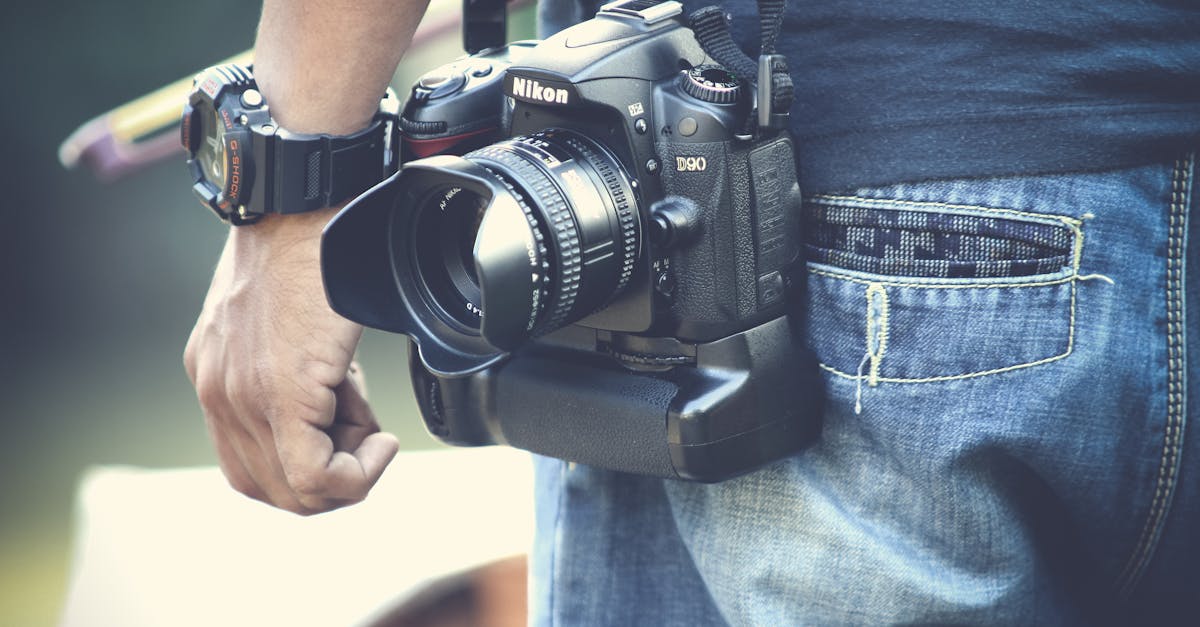Mastering Your DSLR for YouTube Live Streaming: A Professional Guide
As professional photographers, the idea of live streaming using a high-quality DSLR camera is incredibly appealing. Knowing how to use a DSLR camera for YouTube live streaming can be a game-changer for your brand and business, allowing you to showcase your skills and connect with your audience in real time.
In this comprehensive guide, we'll delve deep into how you can set up and optimize your DSLR camera for live streaming on YouTube. From basic setup to advanced techniques, by the end of this article, you'll have all the knowledge you need to deliver stunning live streams.

Why Choose a DSLR for Live Streaming?
Before diving into the technical details, it's essential to understand why you should use a DSLR camera for live streaming. Unlike webcams, DSLR cameras offer superior image quality, customizable settings, and interchangeable lenses, making your live streams look professional and engaging. Plus, the depth of field a DSLR camera provides can significantly enhance the visual appeal of your stream.
:max_bytes(150000):strip_icc()/DSLR-camera-56e0b8ee5f9b5854a9f865ca.jpg)
Getting Started: Essential Equipment
DSLR Camera
First and foremost, you'll need a DSLR camera that supports clean HDMI output. Some popular models include the Canon EOS Rebel series and the Nikon D5600.
HDMI Capture Card
To transmit the video signal from your DSLR to your computer, you'll need an HDMI capture card. Brands like Elgato and AVerMedia offer reliable options.
Microphone
Although DSLR cameras can capture audio, it is advisable to use an external microphone for better sound quality. Options to consider include lavalier mics, shotgun mics, or USB microphones.
Stable Internet Connection
A stable internet connection is vital for smooth live streaming. An upload speed of at least 5Mbps is recommended.

Initial Setup and Configuration
Connect the Camera to Your Computer
Start by connecting your DSLR camera to your computer via the HDMI capture card. Ensure that the camera settings are configured to output a clean HDMI feed, with no on-screen information displayed.
Camera Settings
Set your camera to manual mode to have complete control over exposure, focus, and white balance. Adjust the settings according to your streaming environment to get the best possible image quality.

Streaming Software Setup
To broadcast your live stream, you'll need streaming software such as OBS Studio or Streamlabs OBS. These programs allow you to configure your video and audio sources, overlay graphics, and manage your broadcast.
Configuring Video and Audio
Add your DSLR camera as a video source in the streaming software and ensure that the audio is synced correctly. It may require some fine-tuning to eliminate any audio delay.
Advanced Techniques for Professional Live Streams
Using Multiple Cameras
If you want to add more depth to your live streams, consider using multiple cameras. This technique can provide various angles and perspectives, making your content more dynamic.
Lighting
Good lighting is essential for high-quality live streams. Use softboxes, ring lights, or LED panels to ensure your subject is well-lit and avoid harsh shadows.
Background and Environment
Pay attention to your streaming environment. A clean, organized background can make a significant difference in the overall quality of your live stream. Consider adding some decorations or branding elements to make it visually appealing.
Troubleshooting Common Issues
Video Lag
If you experience video lag, check your internet connection, computer performance, and camera settings. Reducing the stream resolution or bitrate may help improve performance.
Audio Sync Issues
Audio sync issues can be resolved by adjusting the audio delay settings in your streaming software.
Overheating
DSLR cameras can overheat during extended use. To avoid this, use an external power supply and ensure proper ventilation for your camera.
Helpful External Resources
For more tips and tricks on using your DSLR camera, visit SlashGear. They provide a wealth of information that can further enhance your photography and live streaming experience.
FAQs
What DSLRs are best for live streaming?
While many DSLRs can be used for live streaming, the Canon EOS and Nikon D series are most recommended for their reliability and quality output.
Can I use a DSLR camera as a webcam?
Yes, you can use your DSLR camera as a webcam. You'll need an HDMI capture card and streaming software like OBS or Streamlabs OBS.
How do I avoid overheating my DSLR during live streaming?
To avoid overheating, use an external power supply instead of the camera battery, and ensure adequate ventilation around your equipment.
Relevant Internal Links
As an Amazon Associate, I earn from qualifying purchases.

